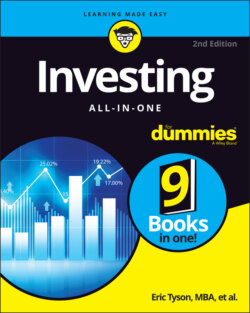Читать книгу Investing All-in-One For Dummies - Eric Tyson - Страница 128
Gaining insight from past mistakes
ОглавлениеBecause most investors ignored some basic observations about economics in the late 1990s, they subsequently lost trillions in their stock portfolios during 2000–2002. During 2000–2008, the United States experienced the greatest expansion of total debt in history, coupled with a record expansion of the money supply. The Federal Reserve (or “the Fed”), the U.S. government’s central bank, controls both. This growth of debt and money supply resulted in more consumer (and corporate) borrowing, spending, and investing. The debt and spending that hyperstimulated the stock market during the late 1990s (stocks rose 25 percent per year for five straight years during that time period) came back with a vengeance afterwards.
When the stock market bubble popped during 2000–2002, it was soon replaced with the housing bubble, which popped during 2005–2006. And February 2020 witnessed a major correction (the Dow Jones industrials, for example, fell over 11 percent during the five trading days ending February 28) over fears due to the coronavirus.
Of course, you should always be happy to earn 25 percent per year with your investments, but such a return can’t be sustained and encourages speculation. In the end, spending started to slow down because consumers and businesses became too indebted. This slowdown in turn caused the sales of goods and services to taper off. Companies were left with too much overhead, capacity, and debt because they had expanded too eagerly. At this point, businesses were caught in a financial bind. Too much debt and too many expenses in a slowing economy mean one thing: Profits shrink or disappear. To stay in business, companies had to do the logical thing — cut expenses. What’s usually the biggest expense for companies? People! Many companies started laying off employees. As a result, consumer spending dropped further because more people were either laid off or had second thoughts about their own job security.
As people had little in the way of savings and too much in the way of debt, they had to sell their stock to pay their bills. This trend was a major reason that stocks started to fall in 2000. Earnings started to drop because of shrinking sales from a sputtering economy. As earnings fell, stock prices also fell.
With some hiccups along the way, the stock market has solidly zigzagged upward since the early 2000s, and the Dow Jones breached the 29,000 level in early 2020, but investors should be just as wary when the market is at nosebleed levels as they are when bear markets hit because market highs tend to be followed by the next bear market or downward move. Stock markets in February 2020 did correct painfully (a fall of 10 percent or more is a correction; a bear market is 20 percent or more), and they offered a buying opportunity for value-oriented investors.
The lessons from the 1990s and the 2000–2020 time frame are important ones for investors today:
Stocks are not a replacement for savings accounts. Always have some money in the bank.
Stocks should never occupy 100 percent of your investment funds.
When anyone (including an expert) tells you that the economy will keep growing indefinitely, be skeptical and read diverse sources of information.
If stocks do well in your portfolio, consider protecting your stocks (both your original investment and any gains) with stop-loss orders.
Keep debt and expenses to a minimum.
If the economy is booming, a decline is sure to follow as the ebb and flow of the economy’s business cycle continues.
